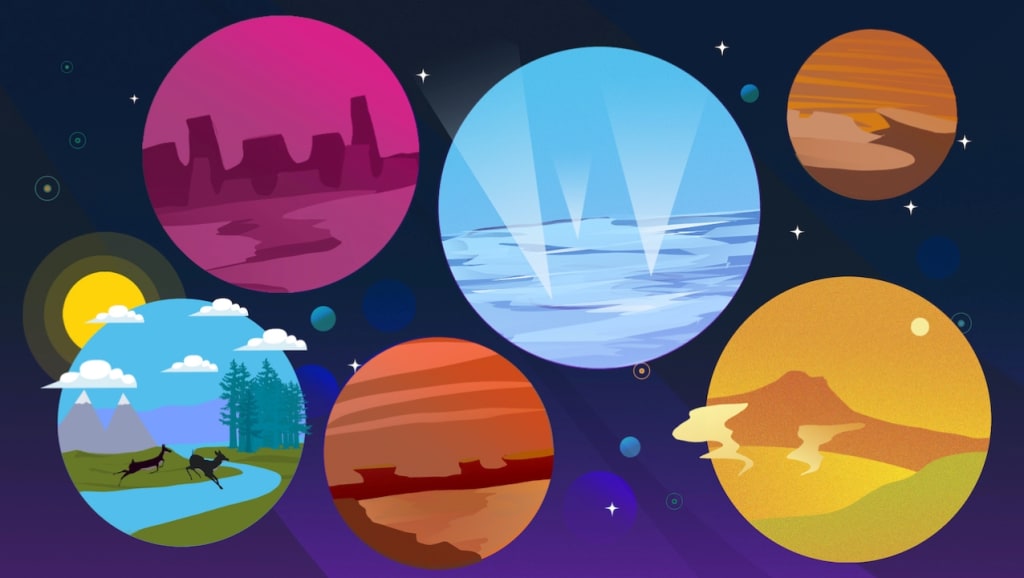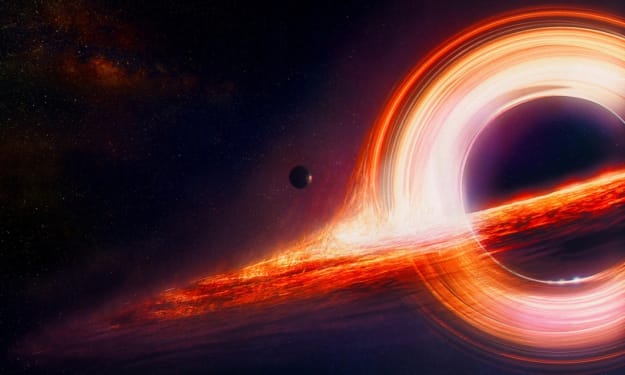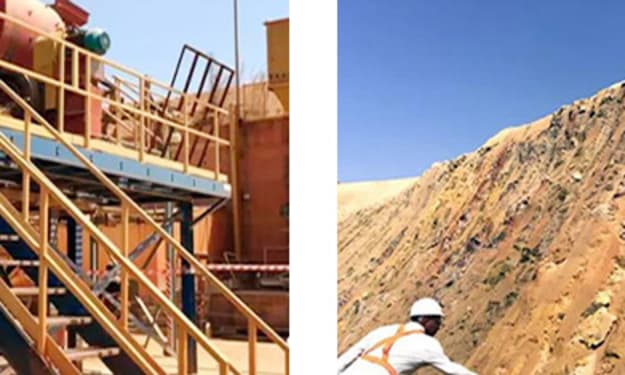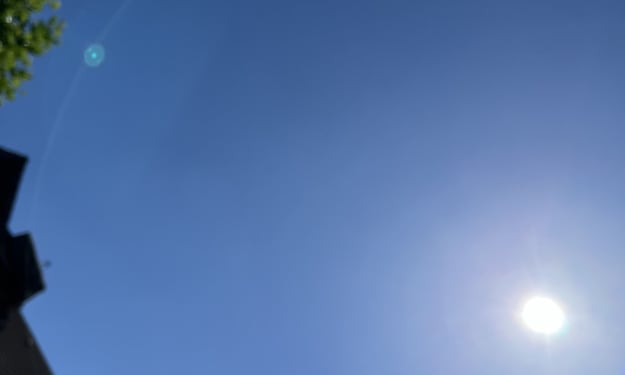How long you live in other planets?
How long you live in other planets?

If you went to Mercury, you'd notice that it's really close to the sun. It's actually the closest planet to the sun and the smallest one too. But even though it's close, it's not the hottest planet. Venus is hotter! It takes Mercury 88 days to orbit the sun, which is more than three months. During the day, it's really hot on Mercury, with temperatures over 800 degrees Fahrenheit! But at night, it gets really cold, like negative 300 degrees Fahrenheit. That's because Mercury doesn't have an atmosphere to hold in the heat. It's like a desert, which is why there's no moisture, clouds, or rain. If you could somehow stay in between the hot and cold parts of the planet, you could survive. But there's no oxygen in Mercury's atmosphere, so you can only hold your breath for so long. Plus, there are plasma tornadoes from the sun that create a magnetic field. Venus is even hotter than Mercury, with temperatures almost reaching 1,000 degrees! But the gravity is similar to Earth's, so you could walk around and go jogging. However, the extreme heat and pressure would crush you like a can. Mars is called the red planet, but it's actually really cold. It takes almost two years to orbit the sun and has 25 hours in a day, just like Earth. The atmosphere is thin and unbreathable, with lots of dust storms and carbon dioxide on the polar caps. You wouldn't freeze, but you'd need some thick clothes to survive.
Wow, Jupiter is huge! If Jupiter was a basketball, then Earth would only be a grape compared to it. Jupiter spins really fast too, only taking 10 hours to rotate around its axis. That's way faster than Earth! One cool thing about Jupiter is the Great Red Spot, which is a giant storm that's been going on for over 300 years. It's even twice the size of Earth! But don't try to visit Jupiter, because the pressure is so strong it would crush you, and the lack of oxygen and strong winds would make it impossible to breathe.
Pluto used to be a planet, but now it's considered a dwarf planet. It's the farthest planet from the sun, so it's super cold there, with temperatures reaching negative 400 degrees Fahrenheit! You'd definitely need a lot of jackets to stay warm. The mountains on Pluto are covered in methane ice and are over 10,000 feet tall. It takes Pluto 248 years to orbit the sun, but only 6 Earth days to rotate around itself. But just like Jupiter, the air on Pluto is unbreathable, with methane and nitrogen floating around. The gravity is also weak, so you'd have to hold your breath while floating in the air before freezing like an ice cube. Visiting Pluto would only last a couple of seconds!
Did you know that Neptune is the windiest planet in our solar system? It has a core that's similar to Earth and 14 moons surrounding it. But, a day on Neptune is shorter than a day on Earth, lasting only 17 hours. It takes more than 150 years for Neptune to spin around the sun, just like Pluto. That's why Neptune is also known as the blue planet because of the absorption of red light by methane in the hydrogen helium atmosphere. But, don't try to breathe on Neptune because the pressure can crush you, just like on Jupiter. Saturn is the second biggest planet and has rings surrounding it. These rings are made up of many layers of ice particles and rocks ranging in all sizes from tiny pebbles to bust-sized objects. A day on Saturn lasts only 11 hours and it's very windy in the upper atmosphere. Saturn also has plenty of moons like Jupiter, but you wouldn't want to go there because you'd be crushed by extreme pressure deep in the planet before you could even open your eyes. Titan is Saturn's largest moon and the second largest moon in the solar system. It has the closest Earth-like conditions compared to any existing planet or moon, but the cold weather will freeze you. This moon is actually the only place in the whole solar system that has liquid rivers, oceans, and lakes. They're all covered with methane and ethane, and the atmosphere is very similar to that of Earth. But, our moon isn't so friendly either because of the lack of oxygen. You can only last as long as you can hold your breath, and the cosmic rays from the sun will also affect you. But, skipping along the moon craters is actually quite fun. If you tried going to the sun, you'd vaporize in the blink of an eye because the temperatures can reach around 27 million degrees Fahrenheit!
The sun is super hot, like way hotter than anything on Earth. Even the outer layers can make you turn into atoms! So, if you're ever flying towards the sun, hit the brakes and get out of there fast. Earth is the only place where humans can live without special gear. We can handle different weather and gravity here. We can live in deserts or snowy mountains, and we won't feel crushed. Scientists hope that one day we can live on other planets, like Mars. But, we'll need to build special domes to live there. Elon Musk wants to send robots to Mars first to learn about the planet. Humans will need to wear special suits to live on other planets because our bodies aren't made for those conditions. The tardigrade is a tiny animal that can live in extreme conditions, even in space! But, humans can't survive without the right gear.
About the Creator
Enjoyed the story? Support the Creator.
Subscribe for free to receive all their stories in your feed.





Comments
There are no comments for this story
Be the first to respond and start the conversation.